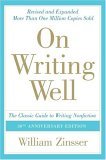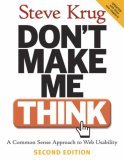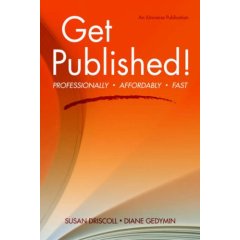What Does it Take to have a Successful Blog?
A while ago I posted that I intended to write a book about Marketing and Sales For Small Online Businesses. Since starting this blog I’ve been continually bombarded with questions on what’s the key to my success for both my blog and my company LandlordMax. Honestly, I have to thank a lot of people for my success. For example I’ve gotten so many amazing tips from online bloggers that I can’t even come close enough to expressing my thanks. There are a lot of great people out there and it pays to listen them when they speak.
And because of that I decided to alter the topic of my first book to something more along the lines of “Ask the Pros: What Does it Take to Create a Successful Blog” (I’m still debating the title). Rather than just focus on what I’ve personally learned, I thought it would be more interesting and informative to get advice from many of the greatest bloggers on the internet today. To let the biggest and best bloggers tell you what’s made them successful. What they believe it means to be successful. How they achieved it. And so on.
Some of the interview questions I’ve been asking as part of the interviews include:
- Which websites would you recommend for any new bloggers starting to blog?
- What’s your biggest tip on writing a successful blog post?
- Which marketing tactic has surprised you the most in terms of its effectiveness?
- What’s your most interesting story related to your blog and blogging experience?
- and so on…
So far 18 people have either expressed very high interest or have already fully committed to being interviewed. Many of these bloggers have more than a 100,000 unique visitors per month in traffic! What’s truly amazing is that I’ve only sent out the invitations for the interviews this week and the replies have been overwhelmingly positive. The response rate to my initial email has been in the strong double digits. I have no doubt this book is going to be a great success!
I’m very excited about this project. It’s going to be a great book with lots of amazing information. I can’t wait to see it in print and listed on Amazon!
Permalink to this article Discussions (6)
Is it Possible to Predict When a Market will Crash?
Every once in a while a specific blog comment will elicit a full article rather than a simple blog comment response. Recently Andy Brice from Successful Software (founder of Perfect Table Plan) wrote such a comment on my recent blog entry Manias, Panics, and Crashes: A History of Financial Crisis:
“Interesting. I’m expecting the insane UK housing market to level off or crash any time now. But I’ve been saying that for the last 5 years…”
Andy is a very smart person whose blog I regularly read (and sometimes comment on). Whose opinion I respect. In this case I absolutely agree with him. I’ve been saying the same thing for North America for some time now, as is evident even in my first month of blogging over two years ago here on FollowSteph.com.
The interesting part of his comment is that he (myself included) know just how hard it is to accurately predict a full economic shift from mania to bust. It’s easy enough to see when we’re in a mania; the fundamental economic principles no longer govern asset prices. But what’s hard is to predict when the general public will realize this. It’s just like the Tulip Bulb boom of long ago; as long as there’s a bigger “sucker” willing to pay more for the asset (in that case rare tulip bulbs) the prices are going to keep increasing.
But now comes the reality. Again it’s not possible to exactly predict when a boom or bust will actually happen, it’s easy to predict when we’re in a boom or bust phase. If the economic fundamental no longer justify the prices then we’re in for either a bust (overly priced as is today) or a boom (under priced as often happens when people overcompensate after a depression). The bigger the discrepancy the bigger the boom or bust.
The good news is that although we can’t accurately predict the exact time a bust will happen, we can still accurately predict when it’s a good time to get in and out at a profit. As Benjamin Graham expresses in his book The Intelligent Investor, as long as you’re buying your asset for less than the real value (intrinsic value) and selling it at a higher price than the real value you’re ahead. He doesn’t show you how to maximize your profit, he just helps you identify how much your asset is overpriced or under priced. No one can accurately tell you when an asset has reached its maximum price (over valuation), that’s speculating on you knowing and understanding the publics psyche which no one can do.
To put it in other words, asset (stocks, real estate, etc.) prices will always shift above and below their true economic value (known as intrinsic value). If you buy them for less than their intrinsic value you’re ahead. If you sell them for more than their intrinsic value you’re ahead. The key to investing is not to try to buy assets at their lowest price and then sell them at their highest price, no one can do this. It would be amazing if that were possible, but it’s not.
What does this all lead to? Well over time an asset can only deviate so much above or below its intrinsic (real) value before it has to re-align itself (adjust its price back to a reasonable value). Right now, at least in North America for sure, prices of real estate properties have deviated significantly above their intrinsic value, so much so that they are now correcting themselves and trying to re-adjust to their intrinsic value. And don’t think we’re there yet, they’ve still got a lot of re-adjusting to do. I expect significantly more fallout before it stabilizes. As a very basic general rule of thumb, a real estate investment property should generate you at least a yearly revenue of 10% of the purchase price (including all costs – renovations, closing costs, etc.). Right now we’re not even close to this, many properties are running at negative cash flow values! This isn’t sustainable.

Knowing this however doesn’t mean you can’t profit from the boom and bust cycles. All it means is that if you buy assets in the under priced area of the above graph and sell in the overpriced areas you should be able to consistently make profits and protect yourself. The “margin of safety” is generally considered to be the discrepancy between the actual price and the intrinsic value – that is how much the asset is under priced. The further off you from the intrinsic value you are, the bigger the profit potential and the closer you are to the max and min’s of the boom and bust cycles. Of course you need to be extremely careful the further away you are from the intrinsic value, especially for overpriced assets, because when the adjustment happens it will be faster and more volatile!
It’s possible to consistently achieve respectable profits, all you need to do is look at the intrinsic value to know when to get in and out. Although sometimes it may take years for an assets actual price to at least come back to it’s intrinsic value, it eventually does. But as Andy’s comment suggests, knowing when a market has peaked is hard to predict. He already knew that the intrinsic value was no longer aligned with the actual price of the asset (in this case real estate), but he still couldn’t know when the adjustment would occur. No one can!
Permalink to this article Discussions (8)
Manias, Panics, and Crashes: A History of Financial Crisis
Are we doomed to repeat history? Unfortunately yes! The book Manias, Panics, and Crashes: A History of Financial Crisis originally written in 1978, now on it’s fifth edition (2005), clearly illustrates just how predictable we are:
“The end of a period of rising prices for assets to distress whenever a significant number of investors have based their purchases of these assets on the anticipation that their prices will continue to increase. Some of these investors may have a ‘negative carry’ in that the interest rates on the funds borrowed to buy the assets exceed the cash income on the assets; these investors anticipated that they would be able to use the increase in value of the asset as collateral for new loans that would proved them with some of the cash that they would need to pay the interest on the outstanding loans. When asset prices stop increasing, these investors are shunted into distress mode since they have no ready way to get the cash they need to pay the interest on their outstanding indebtedness.”
And what about:
“Causes of distress and the symptoms of distress are observed at the same time and include sharply rising interest rates in some or all segments of the capital market, an increase in the interest rates paid by sub-prime borrowers relative to the interest rates paid by prime borrowers, a sharp depreciation of the currency in the foreign exchange market, an increase in bankruptcies, and an end of the price increases in commodities, securities, and real estate. These developments are often related and show that the lenders have become over-extended and are trying to reduce their exposure to risks and especially to large risks.”
Sound familiar to anyone? And to think this was written years ago and it’s repeating itself yet another time. History does repeat itself.
The good news is that if you educate yourself you can come out ahead. And this is why I strongly recommend the book Manias, Panics, and Crashes: A History of Financial Crisis. It’s a pretty intense book written using somewhat verbose and specific economic terms, as you’ve probably already noticed from the quotes above. Therefore if you’re not familiar with economics and business expect it to take a bit longer. But overall the information is excellent and very viable. And although I believe myself to be fairly well versed in economics and business, this book sure brought home some points I hadn’t fully appreciated. A very good read. Well worth your time.
Permalink to this article Discussions (4)
Founders At Work
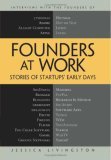 I recently had the very fortunate chance of reading Founder at Work: Stories of Startup’s Early Days by Jessica Livingston. What can I say, it’s a great book! I had problems putting it down. It’s filled with non-stop stories of how people started their software companies. Jessica was able to get interviews with so many great founders that it’s amazing the book wasn’t any longer (and too bad).
I recently had the very fortunate chance of reading Founder at Work: Stories of Startup’s Early Days by Jessica Livingston. What can I say, it’s a great book! I had problems putting it down. It’s filled with non-stop stories of how people started their software companies. Jessica was able to get interviews with so many great founders that it’s amazing the book wasn’t any longer (and too bad).
Each story was great on their own, but some always stick out more than others. For me personally, I really appreciated James Hong’s story of how Hot or Not was founded. I had heard of that site when the internet was a new thing, but I didn’t realize just everything that went into it. His parents even got involved in trying to filter out inappropriate images at some point. He explains to his dismay that he realized this, and then what he did to solve it. For that particular company, in the beginning they were really flying by the seat of your pants. Jessica’s writing is definitely able to convey their crazy roller coaster ride, you really feel what they went through.
Others that stuck out to me where Max Levchin’s Paypal story. Steve Perlman’s story of how they founded WebTv. Caterina Fake’s story of Flickr. The list just goes on. Every story is interesting. In reality there’s not a single founding story I can say I didn’t thoroughly enjoy. Jessica really has a talent for pulling the best out of the people she interviews.
The best news of all about this book is that according to her Channel 9 interview, she’s in the works to create a sequel to this already great book. I can’t wait for it to come out. I’ll definitely be one of the first to pickup a copy.
And if you haven’t already read Founder At Work, you should definitely get a copy.
** Update: You can goto Jessica’s Founder At Work Blog by clicking here.
Permalink to this article Discussions (0)
Nine Woman Can't Have a Baby in One Month
Why is it that so many people continue to believe that software developers can do the impossible? In life there is always a critical path to everything, a path that you just can’t skip ahead. Yes sometimes work can be divided and thereby accelerated such as painting a room. You can get one person to paint four walls or you can get four people to pain one wall each speeding up the by four times. But if you want to apply two separate coats of paint you absolutely can’t get eight people to paint at the same time both coats. It just doesn’t work. The first coat of paint needs to dry before the second coat of paint can be applied. That’s a critical path you just can’t skip, no matter how much you wish it away.
However in software development a lot of people tend to forget this notion. There is a tendency to think that if we add extra developers to any effort we can shorten it by the amount of people we add. The thinking is if we add 20% more developers the time to implement the project should therefore decrease by 20%. The reality is that it doesn’t work this way. It’s not like painting a room. You can’t just grab a brush and start painting. It’s not that simple. Even if you’re the best developer in the world someone from the project still has to show you how to setup your environment. You have to learn how the software is implemented. You have to “get up to speed” which can take some time. This can take anywhere from a few weeks to several months depending on the project because of the inherent complexity of software development.
In some cases adding extra resources can even slow down your effort. For every person you add someone from your existing team needs to “bring them up to speed”, which means their not producing during this time. The closer you are to the deadline the more likely you are to slow the effort by adding new people to the team because of this training cost. They just won’t be productive quick enough to be worth it. They’ll probably only really start to get “up to speed” after the deadline.
My favorite analogy by far is the title of this entry, you can’t put nine woman together and expect them make a baby in one month. The critical path is nine months, no matter what you do. Some work just can’t be divided. Ever try to learn a language by dividing it up with several people while simultaneously skipping ahead some steps? And that’s what you have to anticipate with any software project. There will always be several critical paths.
Not only that, but sometimes one developer can implement a solution an order of magnitude faster and especially better than another developer . This is true in almost any profession. Just look at professional sports athletes, there is an amazing difference in quality. Can anyone beat Michael Jordan at basketball? Anyone want to play hockey against Wayne Gretzky? Every profession has it’s stars and its obvious that there is a difference among them, even among the elite of the elite.
The same is true with software and developers. I’ve heard sayings that an elite software developer can easily be worth ten junior developers. I completely agree. One Michael Jordan is worth several average players. Sometimes it’s worth waiting for a more qualified, or even just a specialized developer, to implement a solution. They might be able to do it in a way that will simplify the life of every other developer on the team and thereby reduce the total cost of the project today and tomorow rather than add to everyone’s effort. We’ve all seen patch jobs that take much longer to do anything with because of a bad implementation. That are buggy and needs to be continually fixed. That are just a complete mess. This is often the result of trying to push the critical path, of trying to apply two coats of paint at the same time.
Not only will you be ahead if you understand the critical path, it will also reduce your total software development costs. It will give you higher quality code which will lead to less bugs, less fixes, less workarounds, less hacks. It will lead to a better solution. Happier customers. Better maintainability. It will make improving and adding new features easier in the future. It will lead to higher employee morale. A better team. Lower turnover within the company. It’s just worth it. If you don’t believe me, just look at the statistics from this article on what happens if you push the critical path too much. Critical paths exist for a reason and it’s absolutely worth your time to acknowledge them rather than trying to wish them away.
Permalink to this article Discussions (11)
Book Recommendation: On Writing Well
Since I started FollowSteph.com about two years I’ve been reading a lot on how to improve the quality of my writing. So far the best resource I’ve ever come across is the book On Writing Well – The Classic Guide to Writing Non-Fiction by William Zinsser. If you haven’t already read a copy, you absolutely should! This book is amazing and filled with great advice that will improve your writing skills.
I’ve only read it a month ago and already I’ve applied many of the suggestions he offers. This is not saying that I’m a great writer, only that I can always improve myself and this book has clearly shown me some great ways to achieve this. Sometimes his advice is subtle and other times it can be so obvious that you can’t understand why you never saw it.
On my last blog entry How to Write Out Your Domain Name, I made several edits directly attributable to this book. For example the beginning of the last paragraph of the blog entry starts with: “It’s only a matter of time before uppercasing each word in a domain becomes the standard…”. In my first draft I had started it with “I’m willing to bet that it’s only a matter…”. I changed it because in On Writing Well the author suggests:
“Don’t say you were a bit confused and sort of tired and a little depressed and somewhat annoyed. Be confused. Be tired. Be depressed. Be annoyed. Don’t hedge your prose with little timidities. Good writing is lean and confident”.
I couldn’t agree more. If you look at the last draft it’s much more powerful without the “I’m willing to bet that” beginning. It’s obvious when you read it, but I doubt I would have noticed it if it wasn’t for the book. After all, we all do it, it’s just that the book brings it to your attention. It’s part of evolving your writing and making it better. Learning something each day.
As another example, in the second paragraph I state “Back in the old day, which in internet time is less than a decade ago, everyone wrote out their domain names in all lowercase.” Before having read the book On Writing Well I would have finished this sentence with an exclamation mark, mostly to get across the light humor I embedded in the sentence. However after reading this suggestion from William I decided not to:
“Also resist using an exclamation point to notify the reader that you are making a joke or being ironic. … Readers are annoyed by your reminder that this was a comical moment. They are also robbed of the pleasure of finding it funny on their own. Humor is best achieved by understatement, and there’s nothing subtle about an exclamation point.”
Although not everything he says should be taken as a rule, which even William himself states, I really respect his advice. He offers examples for each of his suggestions to show the difference. More importantly though, is that when I now read other authors I really enjoy, I notice some of these suggestions in their writing. A great example of how to properly embed humor in your content is just about anything written by Joel Spolsky from Joel On Software. He does exactly what William suggests, he doesn’t force out the comedy, it lets the reader pick it up on their own.
These aren’t the only tips the book offers, it’s loaded with great advice on how to improve your writing skills, be it for blogging, business, etc. What I’ve described above is just two small examples of many that I learned from reading On Writing Well. If you haven’t already read it, I strongly suggest you do.
Permalink to this article Discussions (0)
What am I up to?
The short answer? A LOT! Seriously, I’m overloaded with things to do. There’s a lot going on here alone at LandlordMax. Lots of things going on behind the scenes, lots that’s already been publicized here through this blog, and a lot extra curricular items as well. Today I’m going to make a list of it all. Mostly the reason I’m writing it here is because I’m asked so frequently that it gets too long to say it all. “Lots” just doesn’t work anymore as an answer. So here goes:
LandlordMax – Version 3.11d
We’re planning to release an updated version of LandlordMax (version 3.11d) later this week. This is an updated version of the main 3.11 version and includes a few bug fixes.
The first and largest is a fix for Windows Vista and user access control (UAC). UAC is a new feature introduced by Microsoft for Windows Vista that is causing a lot of people grief with a lot of software, including LandlordMax. This update is going to specifically address this issue. It’s not a complete solution, we’re working with Microsoft to “properly” code where the database of LandlordMax should be stored on your computer. but for now this will correctly deal with this issue.
As well, this release also fixes a few other minor issues. For example one is a small error in the vacancy report when you have an evicted tenant assigned to a unit at the same time as a “current” tenant (the unit appears as vacant when it has a actually has a “current” tenant).
This update is already finished, we’re just in the final testing phase. I suspect it will be available within the next few days.
LandlordMax – Website Re-Design
We’re working very hard on redesigning the LandlordMax website to make it friendlier as well as better selling. I’ve been reading (and re-reading) a lot about web usability and sales & marketing. and there are many improvements we can make. For example we’re going to move away from using so many colors on the main page to instead using whitespace more effectively.
As well we’re hoping to address many of the same pre-sales questions we continually get. One of our most common question is how to implement re-curring accounting entries (rents, mortgages, etc.). Although the software does a great job of it, it’s not always obvious to everyone (especially if you come from another software and expect us to behave in exactly the same way). We currently have an animated tutorial that walks you through the process but it’s only available in the View new features in version 3.11c. With the re-design all such pre-sales animated tutorials will be available on the home page. Basically we’re doing a lot of cleanup to try to answer as many of our pre-sales questions on the home page as possible (without cluttering up the page). All at the same time trying to make everything easier to do.
We’re also hoping to add a lot more screenshots on the main page. Or at least what we call “shorts”. These are cut-outs of screenshots which showcase something. At the very least, if we can’t put a screenshot, we’ll put a link to one or an animated tutorial, whenever we state something. So for example if we say “Easily show a list of tenant’s that are late paying rent” we’ll either link it to a “How-to” or an animated tutorial.
The re-design is going to happen in three phases. The first is going to be a large revamping of the website, especially the home page. In phase one, we’re not going to really change our shopping cart, that going to be pushed to phase two. I’d rather release phase one sooner than wait for phase two to be done. Why wait? So phase one is all about the home page and the new look and feel.
Phase two will be all about the shopping cart. We’re hoping to drastically reduce the number of choices, go from six choices to one with a few “options” (for example shipping). We’re also hoping to refactor the shopping cart for some future additions and options.
Phase three will be the completion, cleaning up the rest. This includes updating the user manual the FAQ, and so on. Adding a lot of animated tutorials. Basically enhancing the content.
LandlordMax – Version 4.xx
We’re also working on the next major release of LandlordMax! We’re hoping it will be available before the end of the year, at least that’s the plan.
The list of new major features for this version has changed quite substantially since we initially started working on it. For example, we anticipated offering QuickBooks support but that’s been postponed to another future version. The costs to benefit just doesn’t align right now. Integrating with QuickBooks is just too expensive and time consuming as compared to the number of requests. We even looked at purchasing third party components to alleviate this but we’ve only had limited success. We’ve already spent a significant amount of time and money on this feature and its unfortunate to have to postpone it again. I’m just glad we’re able to avoid the “sunk cost effect“.
One feature though that’s looking like it will make it into the next major version is check printing. Although its not official yet, and nor will it be until it’s completed (remember our QuickBooks experience), we’re making some good progress here. Another major feature that we’re pushing for is integration with Outlook. Being able to pull out your contacts, put in new ones from LandlordMax, send emails, etc. There’s obviously more, but for now that should give you an idea.
We also have quite a large list of smaller changes we’re planning to implement. Simple things such as having the lease automatically fill in the tenant’s building for you rather than having to re-input it when possible. In other words many many UI improvements. My feeling is that this version will have fewer new major features and instead it will overwhelm you with sheer number of significant UI improvements. Things that will make your life simpler all around.
LandlordMax – Mac version
This version has currently been postponed. We use to get a lot of Mac requests but recently they seem to have fallen (not sure why). We did have a large push for a Mac version, we bought all the necessary Mac hardware to go forward, and so on. We got quite a ways forward but then we hit a few roadblocks (code and image conversion costs). Nothing insurmountable, but enough that I’ve decided to postpone this effort because of the cost to benefit ratio. I really do like the Mac, I’m actually working on a Mac right now that was purchased specifically for the Mac version. Unfortunately Mac support has been postponed. We just have too many other higher priority items. I don’t have the time to manage an outsourced resource to solve our remaining issues. So for now this is on hold.
LandlordMax – Real Estate Analyzer
On the LandlordMax website we currently offer a free real estate analyzer as a traffic generating tool. When we launched it I mentioned on this blog that I’d like to expand it, possibly offering a more advance paid option (maybe even integrating it with LandlordMax). We’re looking into this.
LandlordMax – Browser Based Version
Probably the biggest item here today! We’ve been really really wanting to do this for over a year now, almost two really! We actually almost started the whole thing as a web application. Anyways, our interest in offering LandlordMax as a web application or online service has been increasing with time as more and more people keep asking us about it; they love the software but need a networked multi-user version.
So far we’ve done a lot of research and prototypes to see which path we want to take. My personal training and experience is with J2EE, so I’m a little biased this way. Before I start a holy programming language war, I’d just like to say that J2EE done right can perform very fast and not hog all your resources. The problem is many people don’t do it right, they often try to over engineer everything which is bad.
In any case, just because I’m J2EE biased it doesn’t mean it’s the right solution for us as a produce or company. The reality is that we’re probably going to build it as a PHP based web application. This decision wasn’t easy, it took a lot of time and effort.
The quick of it was that J2EE let us share the current code base (huge factor). It gives us an amazing path to AJAX support (IceFaces – if you’ve worked with it you know what I mean by how impressive their AJAX support truly is). And I know J2EE very well.
The downside is that if we offer it as a web application rather than just as a service, hosting will be an issue for many people (few hosting providers offer J2EE hosting). We looked at Ruby on Rails and decided against it for this very same reason. PHP removes this very large hurdle (don’t try to downplay it, hosting options are a very important factor). PHP is pretty much available everywhere. We can re-use a decent percentage of our code base (at least the SQL queries which are often times pretty complex to figure out). But what really got me excited about PHP is CodeIgniter and their framework. I’m very impressed by it!
Of course just looking at a framework is not the same as really using it. So we’ve since built 3 small trial web applications. This is where WhichJar.com came in for example.
In any case, offering LandlordMax as a web application is not a small effort. It’s going to take some time. We’re working on it simultaneously with the other items listed here today. It’s going to take some time, no doubt about it. With limited resources choices have to be made. It will be available, and right now my suspicion is closer to 2008 than 2007. But we’ll see…
WhichJar.com
As I’ve already mentioned, we’re expanding our reach beyond just property management software. I truly believe a business should focus on it’s core competency, no doubt about it. I’m a strong proponent that businesses should spend a certain amount of their time and energy on other endeavors to expand themselves. For us, that’s about 10% (1 day every other week) on side projects. This is where WhichJar.com came from.
Right now WhichJar.com is stable in terms of code base. What we’re trying to do is grow its database by adding more Jars. For this I’m looking to outsource the database population. The only issue is that I don’t have the time to manage it as I initially anticipated. So right now it’s moving pretty slow. Hopefully this will accelerate sooner than later.
FindYourWeddingDress.com
Another project that’s about to go live soon because of our policy to spend 10% of our time on side projects. This is a simple site that lets you search for and look at wedding dresses. It’s a large database where you can filter out the information (or browse through it all). The site will not sell anything (other than put ads on it when I get a chance) so it’s really about getting pictures and information of wedding dresses to upcoming brides.
Right now this site is somewhat live online (very small database but that’s changing). It hasn’t been marketed at all because we’re in the process of filling it with real data to showcase to perspective companies/designers. That is to say, we’re seeding it with real wedding dresses so that we can show how it works when we contact companies/designers for permission to display their dresses (and get updated information on their wedding dresses). I believe that if they can see it live they will be interested, otherwise it’s a hard sell.
So right now we’re at the stage of getting someone to populate the database with real data. As it’s still in the “side project phase”, this is moving along slower than any of our LandlordMax efforts. However I’m hoping that by sometime next month we’ll have enough data to start contacting designers.
So please feel free to go and check it out. Let me know what you think.
Online Sales and Marketing Book
And you thought that was it! I really am a busy entrepreneur. On top of all this I’m working on a book for smaller online businesses to help them better market and sell themselves. I’ve started writing it, I’m almost done the second chapter now. I was hoping to allocated more time but the Windows Vista UAC bug I just mentioned has really been taking up a lot of my time. This and some other personal things I’ve had to take care of.
FollowSteph.com
As well as the usual article writing like today, I’ve been looking at ways to enhance this blog. One item I’ve really been considering for some time is podcast interviews. I’ve already lined up one person who’s willing to do a podcast interview with me about his online company (it’s a company that offers a different type of service, so it’s interesting). All that remains is making this a reality (figuring out the details). So hopefully you’ll see that sooner than later.
That’s All Folks
I have no doubt I’m leaving something out, maybe even a few items, but at least this gives you an idea of what I’m up to. Yes, I’m definitely keeping busy and I’ll continue to be busy for some time. But as you can see from the list, there’s quite a lot of diversity in everything I’m doing. And that’s why I love being an entrepreneur!
Permalink to this article Discussions (8)
How to Get Published?
In my last entry I wrote how I was interested in writing a book about marketing and sales for small businesses (all small businesses, not just software based small businesses). It was received with good enthusiasm based only on the summary. Several people commented that they would buy it. I also received a number of personal emails saying the same. Therefore I’ve decided to go ahead and write the book.
And like everything I do before I fully commit, I researched my options. I spent the last week analyzing what options there are to authors like myself, and its amazing to see how much the publishing market has changed. In the past you pretty much had to go with a major publication company to get your book out, and even doing that was a challenge. The odds of being selected for publication were really low, never mind actual success. You could also look for a small presses, which is almost the same as large publication company but without all the benefits. In any case, you needed a publishing company to get your book out in the world.
There was also another option, you could self publish. This however was, and still is, a very costly endeavor. You need to have a lot of seed money to truly self publish, you have to cover all the expenses. Let’s say you decide to print 100, 1000, or even 5000 books (for an initial print run), you personally have to cover that cost. That’s above the costs of writing the book, creating the artwork, getting the ISBN, hiring a copy editor, marketing etc. It can be a very profitable venue, its just that you need a substantial bankroll and expertise to go this route.
Today the market has changed for the better, there’s more options. Although most people still prefer going with a publication company there’s a couple of new ways to publish that are easier, quicker, and more affordable. The main ones are POD (Print on Demand) and ebooks.
Print on Demand is where you partner up with a company like iUniverse to print your book on demand, be it one at a time, 20, 100, and so on. You don’t need to make runs, your book can be printed one at a time if need be. However to take advantage of this with Print on Demand you do have to spend a bit of money to get your book ready and into the “system”. The fees aren’t astronomical but they aren’t cheap either. For example iUniverse has packages ranging from $299 to $1,199 (not counting editorial services, etc.). This is great when you consider you can be self published without have to do a full print run of your books.
How do you make money using this service? Like most publishing companies, it’s mainly through royalties. iUniverse gives you a 10-20% royalty depending on what options you want to use. Another benefit is that they’ll sell you copies (again even one at a time) of your book to you at a heavy discount.
The option I investigated with POD and traditional publishing is ebooks. Ebooks are basically books sold in digital format (generally PDF) that you can purchase and download online. I’ve purchased at least a couple dozen myself and I’ve even sold one in the past. Ebooks can be great because the costs are only your time to write and market the ebook. Each sale goes almost directly to your bottom line. The downside is that it’s generally less credible, harder to sell and market. People prefer traditional books over ebooks.
After looking at all the options, I’m strongly leaning towards Print on Demand (POD). You don’t get some of the benefits of a publishing company (big distribution, some marketing, etc.), but you make up for it in other respects. With POD, you’re guaranteed to have your book published, you’re publishing it! With POD you can also get your book to market much quicker. With traditional publication companies getting through the approval process can take months, never mind going through all the steps and negotiations. The difference is 2-3 months versus a year or so. Personally I just don’t have the patience for that anymore, I’d rather just go ahead and get it done. That’s what being an entrepreneur for so long does to you.
As a disadvantage you don’t get your book professional edited for you with POD. You need to do this or hire a professional editor. That’s ok with me because I don’t mind hiring someone for this. Also, you don’t get the full distribution of a publishing company. Your book will not appear in bookstores across the nation, at least not unless you’re a proven bestseller. That’s ok I can accept that. Another disadvantage is that you need to provide all the marketing for your book (books don’t sell themselves). That’s ok too, the topic of the book is about marketing and sales after all. If I can’t do that I shouldn’t be writting this book. Something to also remember is that publishing companies will only continue to market your book as long as it has a return on investment otherwise they’ll leave it entirely to you. Either way you’ll still need to do a lot of the marketing yourself.
Having looked at all the options, the benefits and disadavantages, I believe I’ll proceed on the Print On Demand route. I like the timelines. I like the control. I don’t mind doing all of the marketing, that’s something I know (its definitely a serious consideration for most people). I also don’t mind the loss distribution, my plan was to focus mainly on sales through Amazon anyways. I plan to emulate the success the authors of the book Call To Action had using their own techniques (great book by the way, I commented on it back in July 2005). I can’t find it anymore, but I remember reading somewhere that they didn’t want to sell the book directly on their own website, even if it was for a much higher margin! They wanted every sale to go through Amazon.com so that they could increase their Amazon ranking, giving it some serious momentum (there’s more to it than that, but that’s for another day).
Another factor that really helped make my decision was a book I recently picked up at my local bookstore called Get Published. It’s written by the CEO and editorial director of iUniverse so its very skewed towards iUniverse, it’s almost a sales pitch. But even with that it was a great read. I read most of it in one sitting. Again, there’s no doubt its a book to sell their service, they have testimonials of iUniverse sprinkled throughout, but it still clearly explains a lot about the publishing world. The fact that even with their sales pitch I’m still recommending the book should say something. They really do explain how things work in the publishing industry. They really do tell you the good and bad of the different types of publishing methods available to you (traditional, POD, etc.). They don’t try to oversell you on iUniverse, they tell you what they can’t and won’t do for you. They tell you exactly what the differences are and what you’ll need to do to be successful in both. For example, they tell you that you will need to do 100% of the marketing for your book with iUniverse, they won’t provide this for you. Again I strongly recommend Get Published if you’re looking for information on how to get a book published.
When will the actual book be available? My personal goal, which I’m publicly sharing right here and now, is to have it written before the end of summer. It’s an aggressive goal but I think I can do it. Add another 2-3 months to get printed by iUniverse (ISBN assigned, printing, edited, cover design, etc.) and I’m hoping to have it available for purchase on Amazon.com by late fall to early winter. Let’s see what happens!
Permalink to this article Discussions (8)
Marketing And Sales For Small Online Businesses
For some time now I’ve been considering writing a book about marketing and sales for small online businesses. Not just software businesses, but all small online businesses. During the summer I was even a spearker at such a seminar with Glenn Scott where I personally presented “Website Promotion and Traffic Generation” which got some really great reviews. As one attendee put it, “if the average course is like drinking from a cup [content], then this course is like drinking water from a fire hydrant“. Btw, congratulations Justin on starting CitySales.ca.
Marketing and sales is now a domain of business which I’m quite familiar with, one that I’ve been really striving at since I founded LandlordMax about four years ago. Since that time, LandlordMax has steadily grown in traffic and sales.
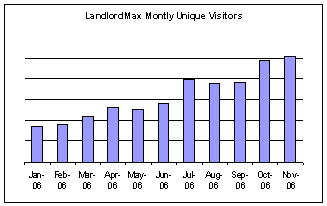
In addition to LandlordMax, I also personally started this blog (FollowSteph.com) almost two years ago now. Together, these two sites get approximately a combined total of a million unique visitors per year! It might not seem like much when compared to the major players (Google.com, Cnn.com, or even Digg.com), but the thing to remember is that both of these sites are focused to niche demographics, so these are phenomenal numbers! All in all this is a very big achievement which I’m very proud of.
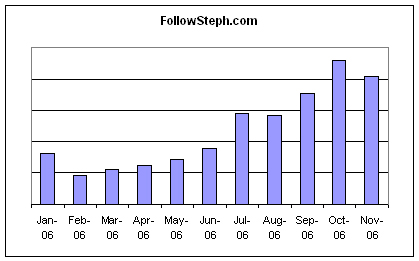
Which leads me back to my initial concept of writing a book about everything I’ve learned since I initially started. It’s been quite a road, with lots of bumps and turns. And I can tell you, I’d have been a lot further ahead today (at least I’d have gotten there quicker) if there had been a book like this one explaining everything I needed to know about marketing and sales for an online business. There’s a lot of information out there, no doubt about it, but it’s all over the place. It took me a lot of time to consolidate it all into one. This doesn’t even bring forth all the trial and error experience I got along the way. I can tell you as part of this whole learning process I also purchased lots of books, lots of ebooks (ebooks are great for quickly changing information such as “Adwords Definitive Guide“), read tons of articles, read tons of blogs, and so on. All in all, it’s been a great big adventure of learning.
So now I’m considering putting it all together in nice little book that will contain lots of information, more meat than fluff. I’m personally not a big fan of fluff, I like to get a lot of information for my money, and especially time (it’s my scarcest resource bar none). My personal value of a book is if I can get at least ten times the what I paid for it (time and money), then it’s worth its price. I’m hoping this book will be worth more than that!
So without further ado, here’s the outline I’ve been looking at so far:
Introduction
- Some of my personal story, including some successes and failures.
Section 1 (General information)
- Why is marketing and sales important to you?
- How does traffic affect your revenue?
- Is all your traffic worth the same?
- Will your efforts need to change over time?
- How will people find out about you?
- What is SEO (Search Engine Optimization)?
- What are the free types of website promotion?
- What are the paid types of website promotion?
Section 2 (SEO – Search engine Optimization)
- What exactly is SEO again?
- Why is SEO important to you?
- What can SEO do for you?
- Tips to improve your website for better search engine ranking?
- How does Google view your site overall?
- How can you improve your site’s ranking outside of your own site?
Section 3 (Free Website Promotional Campaigns – Blogging)
- What is blogging?
- Should you blog?
- How you can blog to increase awareness of your website
- How you can promote your website in your blog
- The real power of blogging
Section 4 (Free Website Promotional Campaigns – Part 2)
- How can your content help drive traffic?
- How can your content help your search ranking?
- What are loss leaders and how can they help you?
- What all this social networking about?
- Is linking still important?
- Do you really need an online presence?
- Are directories worth anything anymore?
- Are e-zines worth your time and effort?
- Potpourri of tips
Section 5 (Paid Website Promotional Campaigns – Adwords)
- How does Adwords really work?
- Is Adwords really that good for you?
- Does it really matter how much effort you put into Adwords?
- What’s CPC?
- What’s CTR?
- Why are they both so important to you?
- How you can do Multi-variate testing with Adwords
- How can you improve my Adwords Ads?
- What’s the best way to Manage your Adwords campaigns?
- Does it really matter what keywords you bid on?
- Are the other systems like Overture, FindWhat, etc. worth trying?
- Adwords Potpourri
Section 6 (Paid Website Promotional Campaigns – Part 2)
- What are presses releases and how do they work?
- Are press releases worth your time and money?
- Which services should you use for a press release?
- How do you determine what’s newsworthy?
- How do you write a press release?
Section 7 (Paid Website Promotional Campaigns – Part 3)
- What domains should you buy for your website?
- A great tip on how you can get an amazing ROI by buying domains
- How do you know which domains to buy?
Section 8 – Promotional Potpourri
- Why you should always sign your emails
- The power of giving testimonials
- Can you use RSS to your advantage?
- Misc Potpourri
Section 9 – Sales Conversion
- What is sales conversions?
- How can you increase your sales conversion?
- How can you monitor what’s going on?
- What to look for when you try to increase your sales conversion?
- Some quick tips on how to increase your sales conversions
Section 10 – Resources
- Links to great blogs and articles
- Recommend books and ebooks
Section 10 (Tentative)
- Small interviews and tips from industry leaders
Well that’s the outline I have so far. It might seem like a lot, but imagine if it’s not all consolidated in one place and rather spread out across multiple books, ebooks, websites, blogs, and so on. It took me a long time to get a real grasp of all this and how it can really affect a website’s presence.
I’m also a big believer of the multiplier effect, which is the concept that your business is a multiplier of many factors. And assuming that’s a fact, multiplying any one factor will significantly increase your overall effectiveness. For example, if you score a 2 on one thing, then 4 on another, and 10 on still another (all out of a max of 10), then you’re a total of 2 * 4 * 10 = 80. However if you increase just one item, since it’s multiplied, you get 3 * 4 * 10 = 120, where you’re whole business is running 50% more effectively! By being 10% more effective in just one area (going from a 2 to a 3 out of a max of 10), you increased your overall business effectiveness by 50%!
Therefore I think there’s a lot of value in marketing and sales, and coming from a more technical background, these are some of the tools I wish I had know more about beforehand. Things I wish I didn’t have to learn at the school of hard knocks. I can tell you that I spent a lot of money learning many of these priniciples. Adwords alone cost me quite a bundle before I finally started to really “get” it. On one ad alone I increased it’s effectiveness from 0.42% to 1.62% through about a dozen small iterations in just a few weeks time. This alone increased my ROI incredibly, much much more than four times! I won’t explain here why it’s much more than four times ROI (42 * 4 is approx equal to 1.62), I’ll leave that to the book. All I’ll quickly say is CPC * CTR is the key to your success (hint: another multiplier effect is in play here).
Anyways, please let me know what you think. Would you be interested in this book? Would you buy it? Would you buy it in ebook format or just as an ordinary book (from Amazon for example). How much would you pay for this book? $29.95? $49.95? Are there other topics you’d like to see included? Any topics you’d like to have skipped? Basically any feedback you may have would be greatly appreciated. At this point this is just my outline, but I will start writing it this weekend.
Permalink to this article Discussions (16)
Two Great Books Every Software Shop Should Own
I was going to just recommend the latest book I picked up this week, but I figured if I mentioned it, I also really should mention another book I’ve been meaning to suggest for several months now but haven’t had the time to write about.
For those who are curious and can’t wait, the two books are The Design of Everyday Things by Donald A. Norman and Peopleware: Productive Projects and Teams by Tom Demarco and Timothy Lister. Both are phenomenal books that every software shop should own and read.
Peopleware is all about how to run a software shop, about how to deal with people, how to create an environment that fosters to software development. It’s an excellent read that will really make you yearn for companies like those illustrated in his book. Probably the best description I’ve heard is how to be an anti-Dilbert company.
The Design of Every Things is about a completely different topic that not only applies to software, but to every single piece of technology, even things as simple as doors. The authors explains how people perceive and use the things you design, which really helps in identifying weak spots. But more than that, he really helps give you a better path on how you can design anything to give your users a better experience.
All in all two great books that should be on the shelves of every software shop. If you haven’t already read these books, I strongly recommend you do!
Permalink to this article Discussions (1)
| « PREVIOUS PAGE | NEXT PAGE » |






